Most of the time when I am out and about with children, shelter is not a priority simply because I work in school grounds where the classroom is easily accessible.
However when working off-site for prolonged periods of time, the need for warmth and shelter goes up my agenda. When planning the beach visits I was very undecided as to what would work best and knew that a process of experimentation was the only way to find out. After all, you can ask others and read advice but at the end of the day each place is unique. A one-size-fits-all approach to being outside rarely works.
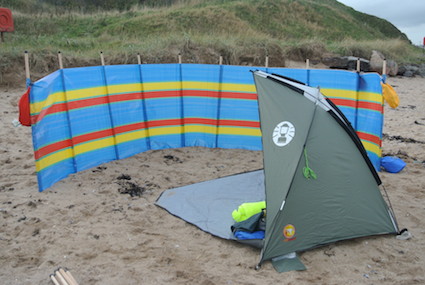
At the back of my head, I knew I needed to trial three approaches. Trios have significance for me outside. Generally, in bushcraft lore, having three ways of lighting a fire ready is handy. When hillwalking, if three minor things go wrong then you’ve got potentially a big incident on your hands. For example, if you lose your hat it’s a problem but surmountable. If you lose your hat, find that you’ve eaten all your food and your map has blown away, then you are in significantly more trouble. So having a 3-pronged approach to shelter seemed apt. However I appreciate this is a personal quirk rather than professional advice!
As you can see from the photo above, one of my approaches was the traditional day out at the seaside on fine weather. I opted for a cheap beach shelter and windbreak. The photo was taken on a trial run and looks very nice. However when working with very young children who cannot reach the tops of the windbreak to bash the poles into the sand and who have a cat’s chance of doing the fiddly work required when wearing thick mitts to erect the tent, on a winter’s day then this was simply not appropriate for our group.
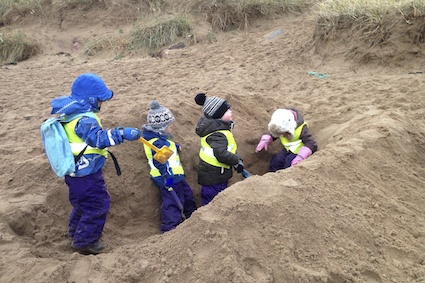
Instead, what we began with was a trench shelter. I had nipped down to the beach earlier to begin digging. When the children arrived, they knew this was their job. And on a cold November morning where temperatures were below freezing, it was a good focus for the first beach visit.
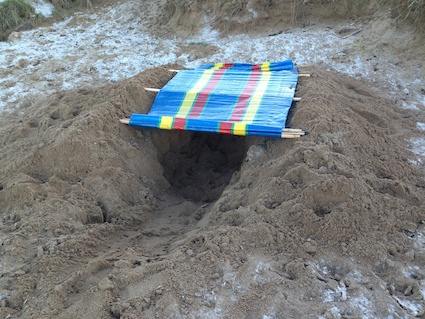
As you can see, it was also a good use of the windbreak. I find it interesting that resources can be used advantageously in different ways. It was a perfect child-sized shelter.
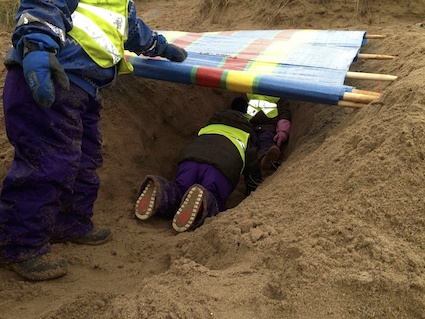
However, this was not the ideal solution in the long-term. Although the trench remained the first week, by the third visit it had disappeared. Whether this was a rough high tide or a result of human activity, we don’t know. But having re-dig a shelter on a weekly basis would take a significant amount of time away from other explorations and discoveries. Also, whilst the children were totally engaged in the trench digging the first week, the second week the trench shelter was ignored.
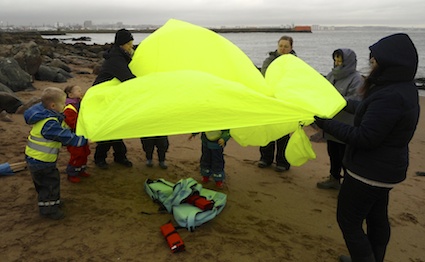
The next trick up my sleeve was the bothy bag. In many ways, this was the best solution and I’m grateful for the Beach Schools training for flagging up this nifty resource. It stays in the rucksack and is only brought out when shelter is instantly needed such as at snack time. The one in the photo is a 10-person bothy bag and it truly means it will easily fit 10 adults. It is not like an elevator which tells you that 8 people can fit inside the lift and you spend the whole ride trying to work out the logistics of this assumption.
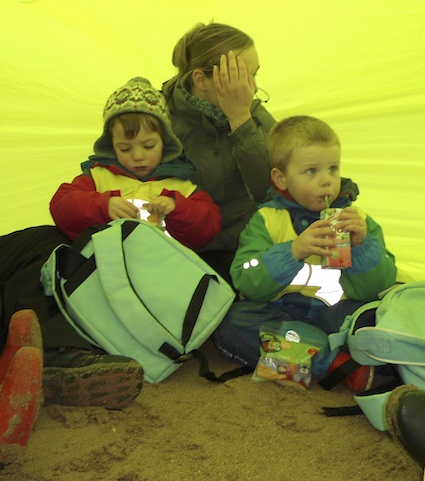
So far, in the six sessions which have taken place, we’ve only used this bothy bag once, as a trial so that the children could see and feel what it was like. Immediately everyone’s body heat begins to warm up the inside space. Just like a fire, one’s back tends to feel colder – so keeping a back pack on may work better.
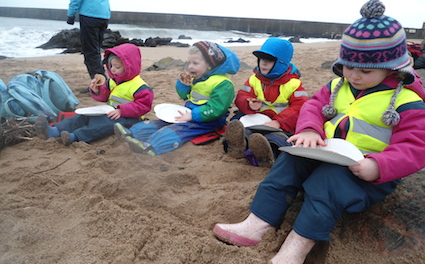
What has proved to be the most effective “shelter” of all has been ensuring the children have warm, waterproof outdoor clothing including warm, thick woolly socks, waterproof mitts and really warm hats. The other trick has been to let children freely play and move around in their own way. They soon learn to keep moving if they are cold and to keep their gloves on. They learn to turn away from the wind when it is very cold.
Perhaps, we need to rethink the concept of what shelter is all about, outside. Protection from the elements can happen in so many different ways.




















Great post & very helpful, I’ve never heard of a bothy bag & think it might be a good idea for us in Bear Woods until we get a permanent shelter built.
Yes – I think it is brilliant. It is stored in a small bag and has a lookout window.